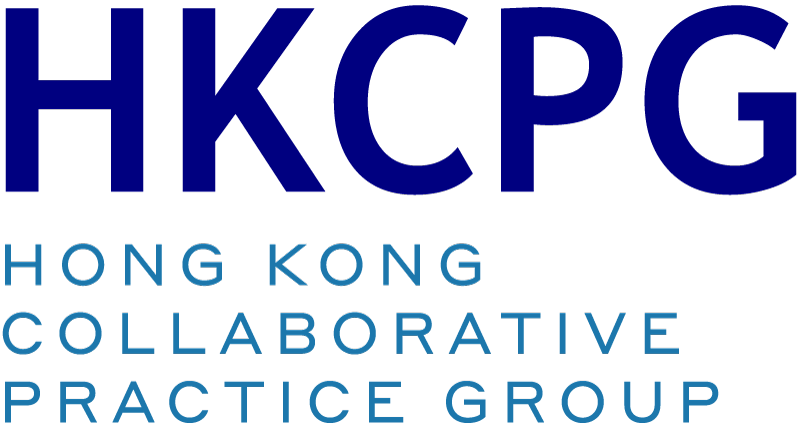Find out more about Collaborative Practice
What is Collaborative Process?
Collaborative Practice is structured process designed to assist couples who have decided to separate or divorce towards a resolution of all issues without the need for Court hearings.
The process involves collaboratively trained lawyers and other family professionals who work with the couple to resolve their differences on all important and relevant issues without going to Court where the outcome of the contested litigation is uncertain. It is a voluntary process where the couples sign a Participation Agreement, bind each other to the process, exchange and disclose full and accurate financial information and aim to reach a mutually acceptable agreement that best fits their specific needs without engaging in lengthy and costly court proceedings. Collaborative Practice has proved to be successful in assisting couples to minimize conflicts and reach resolution in an efficient manner throughout difficult times in various jurisdictions including USA, Canada, Australia and Europe.
Is Collaborative Practice right for you?
Many couples have found that Collaborative Practice fits with both their values and their desire to minimize the pain and destructive elements that often come in conventional divorce processes. Collaborative Practice helps couples move beyond the pain of the moment to achieve a constructive plan for the future for all family member.
Collaborative Practice may be right for your if you want to:
- Maintain an atmosphere of respect, consideration and cooperation.
- Maintain control over the divorce process rather than relegate this to the Courts.
- Ensure that there is constructive problem solving during and after the divorce process.
- Create tailored solutions that benefit all members of the family.
- Ensure that agreements are in your children’s best interests and their needs are considered.
- Preserve your wealth for the family, rather than use on Court processes.
Your Collaborative Practice lawyer will be able to guide you in thinking through whether your situation would be best served by this process.
What is the Process of Collaborative Practice?
Collaborative Practice can be seen in three stages:
- the signing of the Participation Agreement,
- the Exchange of Information and setting of a Timetable, and
- the Joint Meetings.
(1) Participation Agreement
Once you and your partner have decided to embark on the Collaborative Practice process, the first step will involve the couple and their respective lawyers signing a Participation Agreement. The key features of this are:
- An agreement to negotiate in good faith, establishing a sense of trust in everyone involved in the process.
- A disqualification clause, which means that the Collaborative Professionals assisting in the process cannot engage in further work in the case in the event the process fails and the case proceeds to Court. The benefit of this is that all participants – the parties to the relationship and the Collaborative Professionals as well – are focused on working towards a solution and therefore do not consider litigation as an option.
(2) Exchange of Information/Timetable
Once the Participation Agreement is signed, the couple and their lawyers will sit down, possibly with other Collaborative Professionals involved, to work out a timeline for briefing, exchange of financial information, and the joint meetings.
(3) The Joint Meetings
Once these two steps have been completed, the couple and their advisors will embark on the Joint Meetings. This is often the most challenging but rewarding part of the process. Most commonly, this involves a four-person meeting, involving you, your partner and your respective lawyers. Because you are in a Collaborative Practice setting, it will remove the otherwise adversarial nature of such meetings and allow the couple to discuss issues openly. All those involved are working together – collaboratively – to reach a resolution rather than against each other. With this central goal in mind, it may be important for these meetings to involve other Collaborative Professionals, such as a child specialist, a divorce coach, a financial advisor, a trained mediator. This early involvement of other key professionals providing input and advice on child or financial issues is one of the attractions of Collaborative Practice.
Once an agreement is reached, the lawyers involved will then prepare the necessary paperwork to apply to the Court for a formal binding order, sealing the agreement.
What Professionals will be involved in Collaborative Practice?
Given the collaborative nature of this process, various professionals will be on-board to help you navigate your divorce with minimum conflict. To begin with, each party will have their own lawyer who will represent them and guide them through the legal aspects of a collaborative divorce.
In addition to lawyers, each couple may choose to engage other collaborative professionals, primarily (but not limited to) Collaborative Coaches, Child Specialists, and Financial Specialists. These professionals become involved on an as-needed basis, and are trained in Collaborative Practice.
Collaborative Coaches – each party may have their own coach, usually a mental health professional. These coaches facilitate communication between the couple and help resolve conflicts that may prevent the process from moving forward.
Child Specialist – usually a psychologist who helps the couple better understand the needs of the children.
Financial Specialist – works with the couple to gather financial information and provide financial projections.
What is the timing of the Collaborative Process?
Provided that the couple is willing to take the first step towards resolving a case, collaborative approach can be used at any time before or during litigation. Stepping out of the litigation to discuss a mutually beneficial solution does not necessarily mean you have to switch lawyers. Your existing lawyers may be willing to act for you in the collaborative process. He or she will only be unable to act for you if the negotiations are not successful. In this case, you will have to find a new lawyer/firm to act. This is the “disqualifying” aspect of the Participation Agreement.
If the collaborative process is suitable for your situation, the sooner it is tried, the better for all concerned. Litigation can be very draining, emotionally and financially. Many couples elect to try the collaborative approach ‘up-front’ before going to court. The courts can then be asked to approve the settlement, which is necessary for it to be fully binding and enforceable.
How is Collaborative Practice different to litigation and other alternative dispute resolution options?
Up until the development of Collaborative Practice, family law disputes have been primarily resolved using one or a combination of litigation, mediation or negotiation.
Collaborative Practice has developed as combination of the positive aspects of litigation and mediation. The parties still retain their own solicitors and other professionals and have access to confidential legal, financial and other advice, both before and during the Collaborative Practice. The difference from other methods of dispute resolution is that the couple and their advisors are committed to resolving the case outside of Court.
Litigation is the traditional legal method used to resolve disputes where each party is represented by a lawyer who endeavors to convince the Court of their client’s case. Litigation can be very expensive and can take a toll on future co-parenting. In some cases, litigation may remain the only way for parties to obtain an outcome for their dispute on family finances or their children.
Mediation is a dispute resolution process where an independent mediator attempts to assist parties to resolve their dispute rather than parties having a decision imposed on them by a Court. Parties can attend mediation with or without lawyers. Mediation can be a way for parties to reduce the legal and emotional expense of family law disputes and remains a useful tool in resolving family law disputes.
Negotiation commonly describes the process of lawyers exchanging offers to settle disputes, by round-table discussions, by telephone or in correspondence. Negotiations can sometimes take place between the couple directly, perhaps with the support of a family member or trusted friend. Negotiation usually takes place simultaneously with litigation and often when dates for Court appearances have been set down.
What is the Costs of Collaborative Practice?
The costs of the Collaborative Practice process depends on a number of factors, including the number of issues to be resolved and their complexity, the availability of the required information, the time spent and the charging rates of Collaborative Professionals involved.
The cost of Collaborative Practice is often more manageable than traditional litigation as the couple can keep track of and control the process. In this way, future costs are comparatively easier to calculate and anticipate. As the parties expected to act in good faith, work together cooperatively, and provide all the requested information within the agreed timeframe, the Collaborative process can be quicker and cheaper than the traditional court process.
In addition, the emotional cost associated with the collaborative process is much lower than traditional litigation, as it helps the couple focus on working together to reach a resolution, rather than against each other in an acrimonious setting.
What are the next steps?
If you feel Collaborative Practice may be an option for you and your partner, and would like to explore this further, you should speak to a collaboratively trained professional. For more information on the process, please log onto the Hong Kong Collaborative Practice Group website below which will also provide you with names of Collaboratively Trained Professionals.

